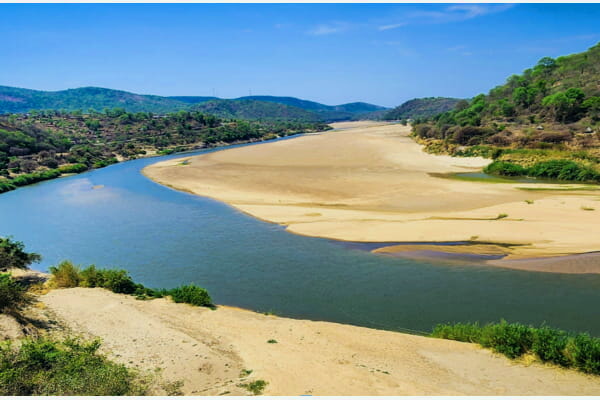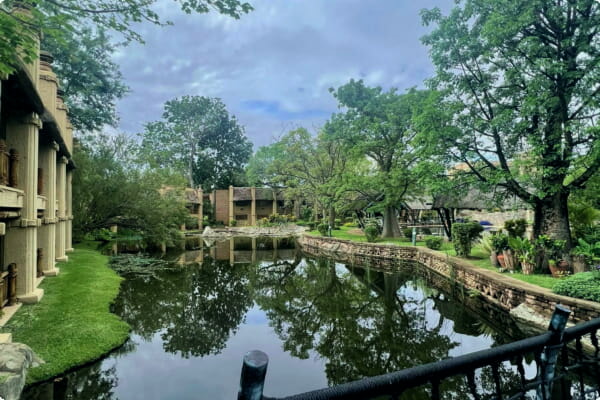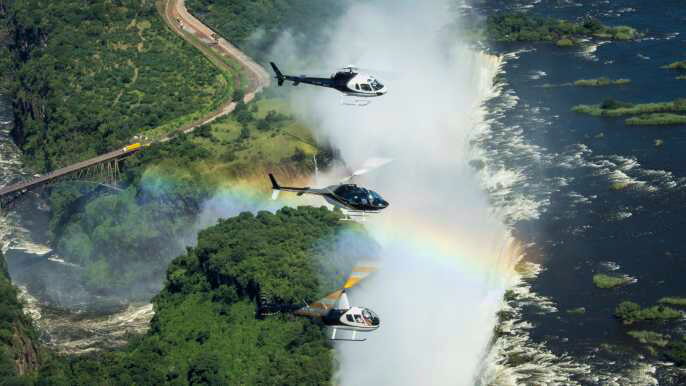Whether you are planning a trip to Zambia or have already been, there are some must-see places in this country that you don't want to miss. These places include Lusaka, the Victoria Falls, Lake Bangweulu and Chingola.
Lake Kariba
Located in Zambia, Lake Kariba is a beautiful man-made lake. It is known for its scenic beauty and enchanting scenery. It provides excellent fishing and a wide array of water sports. It is also a popular tourist destination.
The lake is a great place to watch wildlife. A large number of animals live in the lake. It is also a good place for bird watching. During the rainy season, bird watchers can expect to see many species of birds.
Lake Kariba offers numerous activities for vacationers. Those who love to fish will enjoy the many species of fish that live in the lake. It is important to get a fishing license before going. You can fish all year round on Lake Kariba.

Those who love to view wildlife can also enjoy a walking safari. These tours aim to observe and photograph wildlife. It is also a good way to learn about the local history.
Another popular activity is fly-fishing. The water is clear enough to see fish underwater. A number of species are native to the lake, but some fish have been introduced. Fishing regulations are important to avoid disappointment.
One of the most popular ways to explore Lake Kariba is by houseboat. You can choose between basic self-catering options or a five-star full-board charter. Houseboats also offer paid road transfers from Zimbabwe.
Some of the most popular islands on Lake Kariba include Spurwing Island, Fothergill Island, Chikanka Island, and Antelope Island. It is a good idea to bring binoculars and a camera to view wildlife. The rainy season is also the best time for bird watching.
Visitors can also enjoy multi-day excursions around the lake. The water is calm during the winter and slightly cooler during the summer.
Lower Zambezi National Park
Located on the Lower Zambezi River, Zambia's Lower Zambezi National Park is one of Zambia's most beautiful places to visit. With a total area of over 2,500 square miles, it is a great place to see elephant, buffalo and other wildlife. You can also go on safari and explore the park's many activities. During the rainy season, you may find that some roads are impassable.
The best time to visit Lower Zambezi National Park is during the dry season from May to October. This is the best time to see wildlife as they congregate around the rivers. Also, there are fewer crowds. This means that you can get up close and personal with wildlife. The Lower Zambezi offers plenty of opportunities for birdwatching as well. The park also features several different eagle species, including the fish eagle.

The Lower Zambezi is also home to a variety of animals, including the lion, leopard and waterbuck. You can see these animals from your camp or by taking a boat tour. The area also offers fishing excursions. You can also go on a walking safari.
Lower Zambezi National Park is accessible from Lusaka. A two-hour drive from Chirundu will take you to the park's gate. If you prefer to travel by air, you can charter a plane to Kulefu airstrip. The Lower Zambezi is home to some of the most luxurious camps in Zambia. These camps cater to both modern travelers and bush lovers.
The Lower Zambezi is home to a wide variety of animals, including leopard, hyena and lion. You can also spot elephants, buffalo and waterbuck. The area is also home to zebra, antelope, and bushbuck. There are also several species of birds, including ospreys and wading birds.
Chingola
Located in Zambia's Copperbelt Province, Chingola is the fifth most developed city in Zambia. The city is the commercial epicenter of the province. Its population is 216,626. It is also a key mining centre of Zambia.
It has a profusion of trees, plants, and flowers. There are two shopping malls in Chingola. There are also a number of golf clubs, tennis clubs, and other recreational facilities. The city is also home to the Nchanga Copper Mine, one of the largest open-cast mining operations in Africa.
In addition to being a mining centre, Chingola is also a major tourist destination. The city is surrounded by natural beauty, and it is one of the most picturesque cities in Zambia. The city is surrounded by a number of interesting places to visit, including the Cathedral of the Holy Cross, the National Museum, and the Chimfunshi Wildlife Orphanage.
Kasanka is a small town in Zambia, situated near the straight-line border with the Democratic Republic of the Congo. It is home to white rhinos, Angolan giraffes, and sable antelopes. It is also an important transportation and mining centre.
The city is also home to Chingola Open Pit, one of two open pit operations in the area. It is also home to the Nchanga copper mine, Zambia's largest open-cast mine.
There are a number of tourist attractions near Chingola, including the Hippo Pool, Kafue Flats Reserve, and the Nsobe Game Camp. Visitors can also visit the Shiwa Ngandu Manor House, also known as the Old Manor House, which was built by Sir Stewart Gore-Brown in 1914. The Manor House is located on a large estate and is home to around 30 exotic species of animals. It also offers horse-riding tours and boating.
Lake Bangweulu
Located in the northeast of Zambia, Lake Bangweulu is an area that consists of permanent swamps, which are fed by rivers. This area is home to more than 400 bird species, including the endangered shoebill stork. It is also home to a variety of wildlife, including buffalo, elephants, and antelope.
Bangweulu is one of Africa's last great wilderness areas. The name Bangweulu means 'where the water meets the sky'. Despite its location, the area is not well developed. In fact, local people depend on the marshlands for their way of life. The area is largely a protected ecosystem, owned by the local people.
The wetland is home to over ten percent of the world's wattled cranes. The region also supports large herds of black lechwe antelope. The population of this species has grown from 35,000 to over 50,000 over the years, but it is still vulnerable to habitat loss.
In the wet season, huge grassy floodplains act as an extension of the region, supporting a huge variety of aquatic birdlife. Shoebill storks are among the most iconic birds in the region. These birds are a vulnerable species, but researchers have helped monitor their progress using camera traps.
The Shoebill Guard Programme, a local fisherman initiative, employs eight local fishermen to protect nesting sites and prevent poaching. These guards have helped protect over 30 fledglings.
The Shoebill is one of the most endangered birds in the world. The national park also has a large variety of bird species. The main Shoebill season is from May to August.
Several species of flufftails also make their homes in the wetland. The area is a prime habitat for the black lechwe, which are easy prey for big cats.
Lusaka
Located at an elevation of 4,196 feet above sea level, Lusaka is the capital city of Zambia. It is also the fastest developing urban centre in Central Africa. The city is home to more than two million people.
Lusaka is an ideal destination for tourists who want to experience the real Zambia. There are several markets, art galleries and cultural sites to explore. The city is also a hub for stores and shopping malls.
Lusaka is home to the Lusaka National Park, which resembles a zoo. The park is home to a number of species of animals, including zebras, eland, giraffes, antelopes, zebras, buffaloes and cheetahs. In addition to animals, the park is home to a variety of plant life.
Lusaka is also home to the presidential burial site national monument. The monument commemorates Zambia's struggle for independence. The monument features a statue of a man breaking a chain to independence. The statue has special significance during Africa Freedom Day celebrations.
Kasanka National Park is a popular destination for visitors. It has several lakes and streams, which provide water for the animals. There are also stone age paintings in the Kikubwa Rock Stream Shelter.
The National Museum is a great place to learn about the country's history and culture. It displays art, archaeology, and sculpture. It also features a specialized kids section. The museum is also home to the Henry Tayali Visual Arts Centre, which exhibits cultural art.
The city's largest market is the Lumumba Market, which is located on Lumumba road. This market has over 400 stalls. It is a great place to buy groceries and produce, as well as hand-crafted souvenirs.
Another market to check out is the Northmead Market, which has hundreds of stalls for fresh foods and produce. This market is also a great place to buy souvenirs and stock up on gifts.




